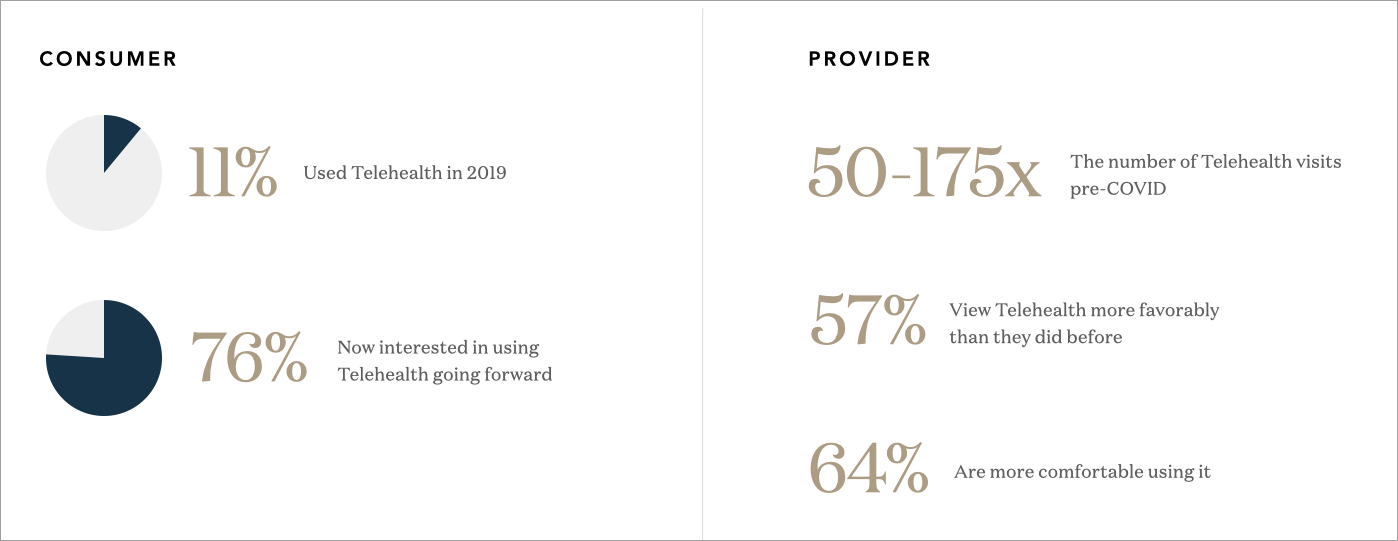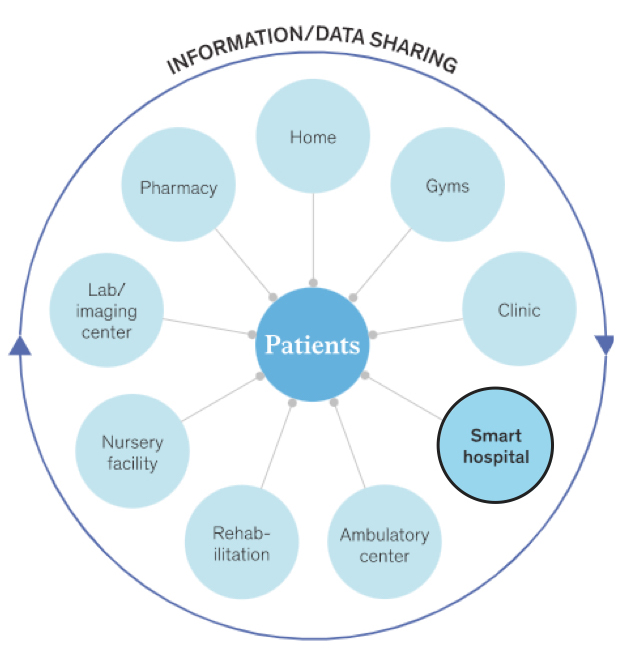Even before the COVID-19 pandemic, the US healthcare system strained under the weight of high administrative costs, inequity of access, insurance pressures, an aging population, exorbitant drug prices, and wildly varying fees for services across the country. This all adds up to a simple fact: despite the fact that the US has the most expensive healthcare system in the world, it does not produce the best outcomes.

COVID-19 has further exacerbated these intrinsic weaknesses. Beyond the human impact of postponed elective surgeries and staff retention issues resulting from burnout, the pandemic has resulted in massive financial losses for both healthcare systems and hospitals.
The pandemic has also accelerated changes in patient behavior. Before the pandemic, patients were already becoming less loyal to their regular healthcare providers. And now, even if patients do remain loyal, they are demanding more flexible, easy to use, and personalized experiences.
In response to all these stressors, the health and wellness landscape is undergoing a dramatic shift toward patient empowerment. Here are four trends driving this digital transformation.
Trend #1: COVID-19 has accelerated telehealth and medtech adoption
In 2019, just 11% of US consumers reported using telehealth services. Now, 76% of US consumers say they are interested in using telehealth services going forward, post pandemic. In addition, 57% of US consumers now view telehealth more favorably than they did before the pandemic, and 64% are more comfortable using it.

The seemingly overnight adoption of telehealth is just one example of how technology is disrupting the traditional relationship between patients and healthcare providers, and between patients and their own health.
Wearable tech is a perfect case study in how people are using technology to take more control of their own day-to-day care. This emerging category is on the rise, especially among older generations and those with chronic health conditions. Nearly 20% of Americans aged 50+ own wearable health-tracking devices, which is almost identical to the adoption rate of the 18-49 age group.
While COVID-19 is mostly responsible for increasing the pace of adoption among key demographics, the overall trend is almost certainly here to stay, especially as tech giants such as Amazon and Google expand their footprints in the category.
Key Insight: The pandemic forced new technologies onto patients. Now that more and more people are comfortable with these new platforms, they won’t want to give up their new-found sense of independence and empowerment.
Trend #2: Younger generations are prioritizing mental health more than ever
Even before the COVID-19 pandemic, younger adults were increasingly focused on mental health. Now, millennials are even more focused on their psychological well-being. According to a report from Mintel, 54% of Millennials reported placing a higher priority on managing their stress in 2020, far outstripping any of the older generations). 50% of Millennials also reported re-prioritizing sleep in the first full pandemic year.
To meet the increased demand for digital self-care experiences, digital therapy and mental health apps such as Talkspace, Betterhelp, and Ginger are flourishing by targeting millennial and Gen Z consumers.

Meditation and sleep apps are also taking advantage of the mental health trend among younger consumers. There are more than 20,000 meditation and self-care apps on the market, but two apps, Headspace and Calm, account for 90% of all active users. The fact that two startups control such an outsized piece of the market means there is room for more competition.
Key Insight: As Gen-Z and Millennials start families and take on more responsibilities in the post-pandemic world, health and wellness brands that target these audiences must continue to deliver self-care and mental health solutions.
Trend #3: Unlocking the $100 billion precision medicine market
Fueled by investor enthusiasm, the precision medicine market is forecasted to be worth nearly $100B by 2026. It’s no mystery why—precision medicine strives to avoid a one-size-fits-all approach to healthcare, which no longer resonates with newly empowered patients. Instead, this trend leverages innovations and insights into a patient’s genetic makeup, environment, and lifestyle to deliver more targeted care.

Pharmaceutical companies are also shifting to embrace the precision medicine opportunity. As of now, drugs meant to treat Alzheimer’s are ineffective for 70% of the population, and the number is even higher—75%—for cancer drugs. If drug manufacturers can use precision medicine to create even modest improvements on those numbers, they will reap the financial rewards, and earn loyalty from patients.
Key Insight: The patient empowerment era will demand more personalized treatment—and improved outcomes. Investing in precision medicine will pay dividends for future-focused players in the healthcare and drug industries.
Trend #4: Leveraging artificial intelligence to create patient-centric care
The healthcare industry is leading the way in implementing AI, and it is doing so in transformative ways. 50% of healthcare companies are now using machine learning to manage their information technology, while 45% are harnessing its power to develop and manage human capital.
Perhaps most critically, AI offers physicians a powerful diagnostic tool to help save lives. As a result, investors around the world are lining up to back AI implementation in the healthcare industry.

The future of smart hospitals, and the future of our healthcare system in general, is a decentralized, patient-centric model built on data sharing. This new model will deliver lower medical costs and improved service quality, helping to greatly increase the overall customer experience.
Key Insight: Healthcare companies and hospital groups that want to thrive in a patient-centric future must leverage AI to deliver more efficient—and more transparent—care.
Conclusion: Reframe the patient experience around people
In a post-pandemic world, the health and wellness space will be dominated by demands for access, control, and hyper-efficacy. Brands that seek digital transformation as a means to meet ever-changing consumer expectations need to focus on delivering patients whole-person health solutions, and on enabling providers to deliver individualized care at scale.
Hero Digital has already partnered with health and wellness providers such as Jefferson Health, Paceline, UNC Health, Universal Health Services, and Spaulding Rehabilitation Network to reimagine the patient experience. From strategy and ideation to creative and development, we transform digital experiences by putting people at the center of everything we do.
Let’s start a conversation about how we can design a better future for your business, and for the people who turn to you for care. Because what’s good for people is good for business.







